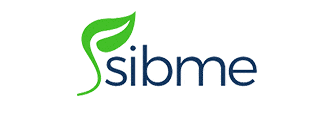
Recently, we’ve been thinking a lot about goal setting at Sibme. As our company continues to grow and add new people, we want to make sure that we’re intentional about keeping ongoing improvement at the center of our work. Our mission is to help our customers focus on improvement, and we believe strongly in practicing what we preach. We also spend a lot of time working with our customers to help them set goals, both as teams and as individuals.
In the spirit of that work, we’ve been researching different protocols and methodologies for setting meaningful goals. All of them have value, and we’ve learned a lot from each. If your team subscribes to SMART Goals, PEERS Goals, OKRs, KPIs, or some other methodology for setting goals, that’s great! Keep doing what you’re doing. We just think there’s something missing when most people apply these templates to their own goal setting. And there’s a simple way to make them instantly more meaningful.
And here it is…
Anyone who has kids or has worked with them knows that children can be…inquisitive. Being the adult in the following interchange can be irritating.
“Why is the sky blue?”
“Why is water wet?”
“Why does the dog bark?”
It can get a little tedious when a kiddo bombards you with a series of “whys.” It can get downright maddening when your answers don’t seem to satisfy him.
Of course, the mindset behind a child’s quest for knowledge is the exact mindset we should apply when it’s time to set goals. A child refuses to accept our answers as given. For most of us, the reason we are annoyed by that fact is that we’ve come to accept the things questioned by the child as fact. Oftentimes, a beleaguered adult responds to the one-thousandth “why” question with an exasperated “BECAUSE IT JUST IS!!!!!”
But that’s the problem.
Because curiosity is a consequence of wonder.
As adults, we lose our sense of curiosity. We come to accept things as maxims that shouldn’t be questioned. This can be particularly true in the workplace. If something works for us, we just do it without questioning why. Sometimes that’s OK. As we become more experienced in our work, the problem only becomes worse because we can become calcified in it and lose our sense of wonder. And work without wonder is, well, not wonderful.
And we want work to be wonderful.
The path through our lives can always be walked more thoughtfully–and more purposefully. Goal setting, when done right, is the way we accomplish that. So when it’s time to set goals for yourself, asking why is the perfect question to ask…a lot.
We’ve got three categories of “Whys” below. It’s a great way to think strategically (and curiously) so that you can arrive at a specific goal that is actionable and clear. Of course, this is only the beginning. You’ll need to set meaningful steps to make sure you know the path towards this goal. But this is a good place to start.
The big why?
Simon Sinek has written and spoken widely about “Starting with Why.” Sinek’s thoughts on the subject are typically geared towards organizations and leaders. But all of us are the leaders of our own lives. In any context, whether it’s a work, fitness, parenting, or a career goal, you should be able to answer the question “Why does this matter?”
Starting with why means questioning your purpose. It can be incredibly difficult if you’ve never done it before. So don’t expect it to happen in 5 minutes. Take some time. Capture your thoughts over a few days. Self-reflection can be the most powerful form of personal growth. And when you finally arrive at an answer to this question, you’ll have a north-star to guide you as you embark on the difficult path of improvement.
For some people, finding your purpose can be difficult. For others of us, it isn’t. Many teachers can easily tell you their why: kids! People pursue careers in education because they have a passion for helping kids learn, and usually helping them learn something. So for many of you, it will be easy to find your why. However, there is an unintended consequence to this purpose-driven life. If your passion is for physics, for example, all of your goals might be focused on physics. That, in and of itself, isn’t necessarily a bad thing. Perhaps you’ll become the world’s foremost leading expert on physics. But if your job is to teach physics, knowing more physics doesn’t always mean you’ll teach it better.
There is a difference between passion and purpose. Purpose implies action. Purpose implies direction. Asking yourself about the purpose of your job can help you focus on the direction of your goal. At the end of all of this, you might be able to answer the question, “what are you passionate about?” But you must be able to answer the question, “how will you achieve your purpose more…purposefully?” Keeping your “Big Why” action focused, also helps with the next why, which is a hard why to ask.
The barrier why
The reason it’s so important to delineate passion from purpose is that passion can be entirely inward-facing, while purpose requires action in the world. Let’s return to our hypothetical physics teacher. If her passion is physics and she spends years honing her knowledge on the subject, all she will become is an expert on the subject. When her students fail to learn from her or share her passion, it can easily become the students’ fault. Ultimately, the teacher will become resentful of her students, and her passion for physics will be ruined by her inability to reach her students. In this scenario, nobody wins.
However, if this teacher’s purpose is to teach physics, the conversation changes. She might still have trouble reaching and teaching her students, but the situation becomes a barrier to overcome. And all barriers, no matter how challenging, can be overcome with enough time, enough effort, and enough support.
In other words, after you’ve decided why you’re doing what you’re doing, the next question to ask is:
Why isn’t it working?
WARNING: this is not an opportunity to start blaming things or people. If the answer to this question results in a laundry list of excuses, you won’t get anywhere. Even if the hand you’ve been dealt is a tough one, it’s still the hand you have to play. So ask again, calmly.
Why isn’t it working?
This is a very different question than most of what we see in schools. Typically schools rush to solutions before correctly identifying the problem. If students aren’t learning, the assumption can be that the curriculum is flawed, so let’s get another curriculum. Or perhaps classroom management is the problem, so let’s implement a new classroom management protocol or impose some new rules. This is where the thinking stops.
The trouble with these solutions is that they’re almost always from the top down and don’t get to the root cause of a barrier. The mindset behind them is that there is a one-size-fits all solution to a big problem and all you need to do is master a new set of skills as a group that can be easily observed and monitored for compliance.
When this happens, the solution becomes the purpose. And that never works.
These solutions are almost always too broad to actually solve a specific problem. And professional learning that focuses on them is the human equivalent of obedience school. Professional Development workshops and coaching programs focus on training the teachers to implement a series of behaviors designed to elicit a series of behaviors from students. But the foundation is not purpose, it’s behavior. It’s costly, time-consuming, and almost never works.
Asking the questions “why am I here” and then “why isn’t it working” results in complexity. Each person has their own answer to those questions. So one-size-fits-all professional learning is no longer useful.
The bad news is that each person will suddenly become responsible for their own growth. This can be hard to manage.
The good news is that each person will suddenly become responsible for their own growth. Motivation will trump management everyday.
As you explore the “barrier why,” You’re likely to come up with a bunch of reasons why something isn’t working. That’s actually a good thing. Like a good scientist, you’ve defined a purpose (the big why) and a set of hypotheses (the barrier whys). Now it’s time to test each hypothesis one at a time until you’ve found a way to accomplish your purpose more purposefully. It might be immediately apparent which one of your barriers is the most important to test first. But if it isn’t, just pick one and start working on it. All you have to do work to overcome the barrier and, when the barrier is overcome, test the hypothesis to see if your big why is accomplished. Of course, the answer to that last question will always be no, because there will always be room for improvement. But that’s why we’re all here, isn’t it? Continuous improvement?
The five whys
OK…you’ve asked Why enough, right? It’s time to get to work, right?
Wrong.
(After all…if you’re not as annoyed with yourself as you are with a three-year-old, you probably aren’t being curious enough.)
Sakichi Toyoda was the son of a farmer and became a well-known carpenter in Japan. Toyoda would go on to build a vast empire of Japanese manufacturing companies, an empire that now includes the Toyota Motor company.
Sakichi was famous for asking Why. His “Five Whys” technique is still used at Toyota today and has become world-famous for its simplicity and effectiveness.
If you simply stop with the “barrier why” you’ll be in better shape than most people. However, you’re likely to merely solve a problem. Sakichi used the Five Whys to do more. Toyoda’s goal is to identify “counter-measures” to permanently address an issue that causes the problem, rather than solving the problem itself. The goal is to make sure that problem never occurs again.
Here’s a famous example of the Five Whys in action. Like our inquisitive toddler, each why is a question to the previous answer.
The barrier: The car won’t start.
Why? The battery is dead.
Why? The alternator is not working.
Why? The alternator-belt has broken.
Why? The alternator belt was well beyond its useful service life and not replaced.
Why? The vehicle was not maintained according to the recommended service schedule.
Toyoda’s belief was that asking five times was sufficient to identifying the real reason why something wasn’t working. By addressing that problem, Toyota was able to refine its auto-manufacturing so that each iteration of their car was better than the last. Fixing the battery, the alternator, and the alternator-belt would have made the car run, but the problem would have returned. By ensuring the vehicle stays on a regular maintenance schedule, you identify a counter-measure in an effort to make sure the problem doesn’t return. That way, you can move on to something else instead of the sisyphean task of solving the same problem over and over again.
The hurried-world of a school can often force people to fix one problem after another. We busily move from task to task without ever asking why we’re doing it. We have plenty of momentum, but no direction. The issue with this mindset is that the problems don’t go away. The other issue is that work becomes a series of problems to be solved, and nobody wants to live a life like that.
That’s why goal-setting is so important. Each of us needs purpose and each of us wants to improve. It’s human nature. Too many of us allow problems to define our purpose, and we don’t take time to let curiosity in. By setting goals that answer the big why question, our lives begin to have momentum and direction. And maybe, if we keep doing it enough, a little childlike wonder.

